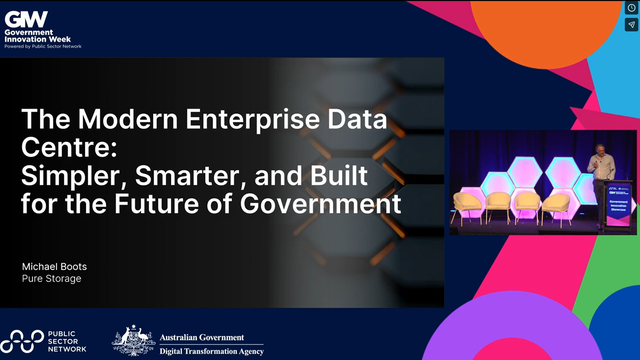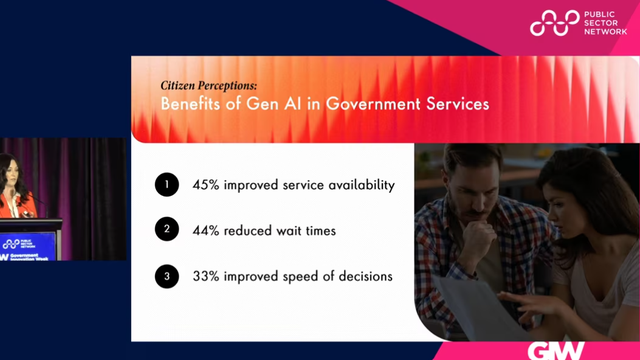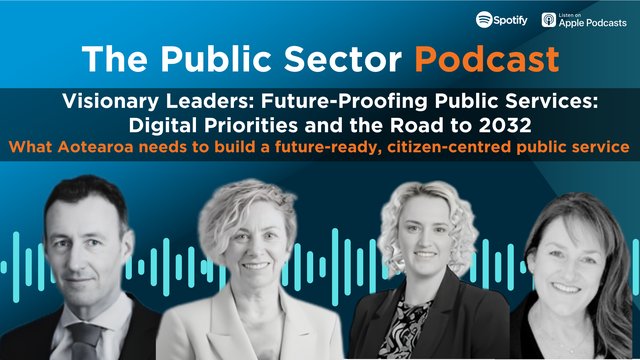Towards Procurement Excellence – Boosting Supplier Relationships and Maximizing Results
Panel Session: The Future of Public Sector Contract and Supplier Management
Featured Speakers:
- Tamara McNulty, Director, Procurement, Contracting and Contributions, Parks Canada
- Adrian Bennett, Assistant Director, Procurement and Contracting Services, Elections Canada
- Guylaine Carrière ing., Director, Center of Expertise in Agile and Innovative Procurement, Shared Services Canada
- Michele Lajeunesse, Senior Vice President, Government Relations and Policy, TECHNATION
- Ricardo A. Seoane, Associate Director, Strategic Policy Sector, Acquisitions Branch, Public Services and Procurement Canada
- Dhruv Dang, Managing Director, Real Folk
A new phase for procurement

The pandemic has shown that organizations now need to be a lot more resilient and prepared for all occurrences. In some ways, procurement is an industry that has been greatly affected by the COVID-19 pandemic and other supply shocks. It is also an industry that will take a long time to recover, even after the pandemic has passed, given the multi-national supply chain that the industry operates under. Yet at the same time, it is an industry that is innovative, robust, and highly adaptable. To continue to be such, Guylaine Carrière ing., the Director of the Center of Expertise in Agile and Innovative Procurement at Shared Services Canada, says “the first thing we need to do is to work better together.” In some ways, procurement has always been a “constraint but we need to move it to become an enabler” In other words, “we need to challenge the status quo.” Procurement has the ability to transform the way business is done across Canada, especially from a technology perspective.
Tamara McNulty, the Director of Procurement, Contracting, and Contributions at Parks Canada, has a slightly more nuanced and possibly “old school” approach to procurement. As much as it should be a disruptor, it should also be about “adding value to services.” Procurement, especially in large and public sector organizations, is still often described “as a necessary evil; as something we go through in order to get what we need.” As much as that is true, it doesn’t make the function appealing or attractive. If however it could be seen “as a value-added service, then it would be embraced as an integral function to any organization.” This would mean that procurement would have to change from being seen as “purely transactional to a more strategic function.” This would require greater expertise and professionalism across the industry and a greater understanding of the business requirements. It would also have to be a two-way street. Not only would the procurement officers need greater expertise, but the “clients would need to be better experts in their own projects,” which is not always currently the case. “Procurement should be seen as an opportunity to bring together the various priorities of government together.” In the case of Parks Canada, this includes “the greening of government operations, the diversity, and inclusion and the accessibility of Indigenous procurement.”
Michele Lajeunesse, the Senior Vice President of Government Relations and Policy at TECHNATION, Canada’s nexus between the tech sector and government, says that one way to transform the industry and move towards the vision of procurement as a value-added service is to remove “the words ‘supplier’ and ‘procurement’.” Ideally, everyone involved in business “is a partner, and the procurement function is (or should be) much more integrated with the business.” To really get to this point, it is about “understanding the community, the industry, and having a better sense of how to work with industry.” In some ways, it is about big businesses supporting small businesses with incentives from the government. After all, “we are all part of the same ecosystem.” This is currently not quite happening as it should, and partly because “Canada has slipped in world standings in the areas of technology and innovation.” The way to overcome this is for the government “to use its biggest economic lever, which is its purchasing power.” This is outlined in a 2021 federal budget proposal called the ‘Innovation Adoption Program’
[1]
that TECHNATION prepared. This would make procurement the true “enabler” that it can be, and would really ensure that everyone works in partnership. Ultimately, “working and acting outside the box would mean that nothing is impossible.”
Ricardo A. Seoane, the Associate Director of the Strategic Policy Sector and Acquisitions Branch at Public Services and Procurement Canada (PSPC), says that in order to ensure that procurement becomes a true partner of business, there are some myths that need to be dispelled. For instance, “there’s a belief that we can’t talk to vendors.” The truth is that the discussions need to be mutually beneficial and need to lead to a solution. That way everyone can talk to each other to become partners. As part of that, PSPC is “putting in place a vendor performance management system.” This is a system that will “recognize good performance” and will “ensure that we can address issues before they become major or problematic in terms of the key vendor risks.” All of this is designed to weed out the underperforming vendors and to “reward the good contractors by giving them greater chances of getting repeat contracts.”
Adrian Bennett, the Assistant Director of Procurement and Contracting Services at Elections Canada, says that COVID-19 has enhanced the need to make procurement a partner in the way organizations operate. In 2020 there were some by-elections that Elections Canada was responsible for staging, and by their nature, by-elections are out of cycle and not planned for. As such “we had a clear strategic partner” that helped in delivering them, and “the roughly 35 other peripheral and enabling projects” associated with these elections. This meant that for a while “we worked night and day,” but there was an “enormous value add for critical requirements of having that strategic partner, in an innovation sense.” Working on this with a strategic partner during a pandemic and with all the work arounds that were required, “meant that we were able to assess risk, and manage the open and continuous communication between our partner and ourselves.” It worked so well because the partner had “a real plan, a real coordinated supplier relationship.” From an organization perspective, there was success and seamlessness because of “our nimbleness and ability to adapt when there were supply chain disruptions.”
Dhruv Dang, the Managing Director of Real Folk, a Canadian software consultancy, says that the pandemic taught them lessons too. They mainly service the BC Government and during the pandemic, they noticed two main trends, which are actually two sides of the same coin. Buyers generally only bought what they needed. They bought for “an immediate need to respond to the pandemic, but that upset a lot of existing processes.” For longer-term projects (ie: “non-essential procurement”) budgets were generally “diverted to essential or emergency responses, and that really affected ongoing projects. Vendors were also affected.” Although it initially seems incongruous, having a good software package is one way of addressing the procurement issues. This was borne out during the pandemic. Yukon is a huge territory in northwest Canada, to the north of BC, but only has a tiny “population of around 40,000.” As such, it was hard for them “to respond to the pandemic because they’re a small, at-risk community.” So they piggybacked onto the work of the BC Government, and together with Real Folk, “they were able to deploy the digital marketplace and adapted it to their own procurement regulations for a very low cost.” The pandemic, therefore, showed that “platforms played an extremely central role in terms of predictions and procurement, and will continue to do so.”
[1] https://technationcanada.ca/wp-content/uploads/2020/10/TN-Budget-2021-Proposal-Innovation-Adoption-Program-Final-Sept-21.pdf
Risks and Challenges
Guylaine Carrière says that one of the reasons that the procurement industry needs to change is because a lot has been taken for granted for a long time. It has not been uncommon for a vendor “to wait six months or even up to a year to know if they won a contract. This is not fair on them, and there has been no transparency.” Vendors have a right to know whether or not they are still in the running for a job. Some people used to believe in the “perception that if you tell them they are not, then they will pursue you.” This may have been the case, “but it is very minimal and we should be honest.” Vendors also need to know what is involved in the process.
Michele Lajeunesse says that one of the issues currently at play is that there seems to be little collaboration between smaller and larger enterprises. “We need more diversity, and what I mean by diversity is small and medium-sized enterprises coming forward to work with large service providers to deliver very innovative solutions.” This is particularly a lesson that has come out of the pandemic. The other lesson is about “going back to the same old processes. It’s like a rubber band, and the tendency is to just let go and revert back to the same old ways of doing things. But I encourage the government to open up and be more inclusive.”
Dhruv Dang says that COVID-19 exposed “a real sense of ambiguity. We didn’t really know what to expect at the beginning of the pandemic and how serious it was.” In a procurement sense, this meant that most non-urgent things were put on the backburner in “a mad rush to get things done that needed to be done. But we have to find a way to keep moving forward even during ambiguity.” In terms of smaller versus larger enterprises, this also caused a problem because the smaller ones struggled whilst the larger ones “tended to be better capitalized.”

"
Each time you ask something of a vendor, ask yourself if you know the level of effort it will take them in order to fulfil that. Vendors need to be treated like partners too because we all play in the same sandbox together.
Guylaine Carrière ing. Director, Center of Expertise in Agile and Innovative Procurement, Shared Services Canada
"
While the government was in crisis, they dropped the ball a bit in terms of looking after the people. We need longer term vision, and crisis management needs to be top of mind in every industry including procurement, so we can continue to move forward.
Michele Lajeunesse Senior Vice President, Government Relations and Policy, TECHNATION
Michele Lajeunesse adds that some of the smaller enterprises pivoted their operations into a completely different direction just to stay afloat, whilst some of the larger tech companies did extremely well out of the pandemic. From a people perspective, “some found greater engagement, and some found they were almost closed off” because their companies were engaged in things that were not normally part of their operations.
Tamara McNulty says that in general “there’s a ‘don’t call us, we’ll call you’ mentality in procurement.” But during the pandemic, this changed somewhat and collaboration became the norm for some time. At Parks Canada for instance, “we still had critical infrastructure procurements that were happening,” like projects related to bridges, dams, and highways, since Parks Canada manages “national historic sites as well as parks.” Many of these structures needed to be maintained or repaired, and a pandemic wasn’t going to stop that work. If the work had stopped, there would have been floods or other serious damage across parts of the country. “So the suppliers were willing to help us and to collaborate to make that happen, even despite all of the uncertainty in what was going on in the world.” Many of them showed flexibility in terms of the way they worked, but also in terms of “payment processing.”
“Continuing to work in different and flexible ways was critical to maintaining the mental health of the workers. Everyone came together and worked for the good of our parks and services so that we could continue to deliver on our mandate for the benefit of the country. This collaboration between partners is something that needs to continue.”
Tamara McNulty, Director, Procurement, Contracting and Contributions, Parks Canada
Ricardo Seoane says that in order to continue to overcome emerging challenges, PSPC “reached out to industry associations,” and developed “four high-level performance areas: cost, management, quality, and schedule.” Every one of these was then further broken down into “key performance indicators that will be relevant for the different commodities that we contract.” In other words, every contract and every form of procurement will now have one or more of these areas and KPIs attached to it.
“When we’re assessing the quality of a consultant contract, each of these KPIs will come into play. That will make the whole process easier to assess and work with.”
Ricardo A. Seoane, Associate Director, Strategic Policy Sector, Acquisitions Branch, Public Services and Procurement Canada
Adrian Bennett says that “the organizations that have been most successful throughout COVID-19 are those that have really focused on people.” In a procurement sense, that means “collaboration rather than confrontation,” and it means focusing on competencies and expertise.
"
Contract management these days is about a whole mindset to advance the organization, to manage risk, to manage the supply shock, and then to enable your supply partners in a very similar fashion. It means having open communication that always revolves around people.
Adrian Bennett Assistant Director, Procurement and Contracting Services, Elections Canada




































